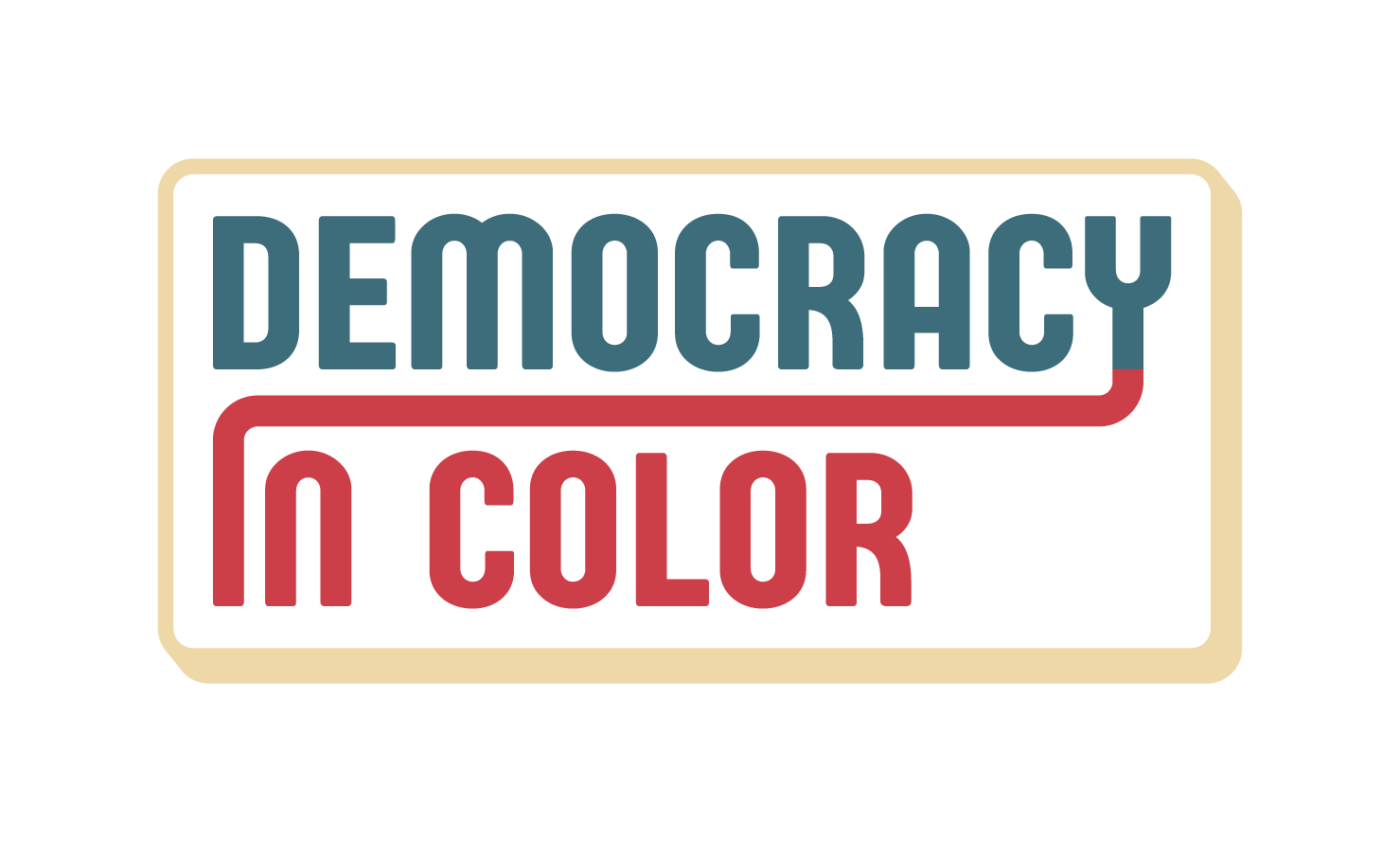Ed. note: We have now tabulated the updated response from the Bennet campaign. A new report card is shown below (6/25/2016)
Since campaigns operate in a competitive context, there should be mechanisms that allow campaigns to share information while minimizing the risk that a competitor will gain access to sensitive information. Accordingly, our report cards disclose overall rating without revealing sensitive information. Here, we describe the kinds of factors that we consider in developing our ratings for each report card component.
State Context
Before examining a Senate campaign’s strategy and activities, our team of analysts first studied the state context for the Senate race.
Each racial group has a different probability of voting for the Democratic candidate, and each state has different proportions of each racial group. States also vary in the proportions of Democratic-leaning voters that are registered and that vote frequently, so the need to register voters or turn out infrequent voters differs. The team also studied the historical patterns of statewide election outcomes and the size of the vote gap between the winners and losers. Finally, if a Senate campaign is taking place in a battleground state, we analyzed the likely impact of the Presidential election on the dynamics of the race.
When rating a Senate campaign’s performance in a particular category, we benchmarked that performance against a model of optimum performance with each racial group in the state in question. In other words, the benchmarks are different for each state—a state with a 90% population of white people has very different benchmarks from a more racially diverse state.
Overall Strategy
This component of the report card focuses on the two most important strategic decisions that a campaign makes: 1.) which voters it targets in order to win; 2.) how it allocates the budget. In terms of the budget, the team specifically focused on how much of the resource pie goes to each group of voters. In some states, the Senate campaign budget might also be one of the most significant sources of funds for the “ground game”—direct outreach to voters. In these states, we examined how much of their budget is going to this critical area.
Direct Voter Contact (Ground Game)
Direct voter contact, also known as “field,” or the “ground game,” involves directly communicating with voters through calling them on the phone or speaking with them in person. These strategies are particularly important for turning out voters who do not vote regularly. Our team assessed whether campaigns are engaging in the most effective practices in this area and knows how to execute this approach well with different racial groups.
Polling
Polling is used to guide many campaign decisions. Our team examined whether the campaign’s polling is designed to provide accurate information about each racial group that could play an important role in the election’s outcome.
Paid Media
Campaigns use many forms of media including television, radio, digital media, and direct mail. Our team examined whether the campaign’s media strategy is designed to effectively reach each racial group that could play an important role in the election’s outcome.
Champion for Community Issues
For voters who do not regularly vote, a critical factor in deciding whether to vote in a particular election is whether there is a candidate who seems committed to making a difference on the issues that most affect their lives. These voters would need to see both that these issues are part of the candidate’s policy platform and also that the candidate seems committed to championing these issues.
It is not enough for the candidate to merely list these policies on the website. S/he must also talk about them to signal to these voters that they are important priorities.
Campaigns will make their own determinations about messaging, but it is important to note that in the current media environment, people of color are listening to mainstream messages and will notice whether or not the issues important to them are mentioned as part of the general campaign talking points.
To develop a grade for championing community issues, the team turned to civic engagement groups in the state. These organizations are seeking to turn out people of color who do not regularly vote and could tell us whether the potential voters they were speaking with were motivated by the candidate’s stance on issues that matter to them.
Contribution to Infrastructure and Synergy
Senate campaigns have an opportunity to contribute to the success of down-ballot races and the long-term success of Democrats in the state. Our team examined whether the campaign was coordinating with other efforts in a way that built synergy and contributed to long-term infrastructure.
Staff and Consultants
Campaigns are more effective when their staff and consultants represent and are knowledgeable about the racial groups the campaign needs to reach. This means that staff and consultants must have cultural competence in reaching specific communities. Of course people who are not from a particular racial group may have cultural competence in reaching that group, yet it is also helpful to have staff and consultants who are from key racial groups who also have cultural competency. Our team gathered information about the racial mix and cultural competence of the campaign’s staff and consultants.
Appropriate Transparency and Accountability to Stakeholders
People contribute their resources and time to campaigns because they very much want the candidate to win. They deserve to have information about the campaign that can help them form an opinion as to whether the strategy is sound. Our team rated the campaign on its willingness to communicate key aspects of its strategy.
As noted above, we understand that campaigns and committees must balance transparency with protecting sensitive information from competitors. Accordingly, our report cards disclose overall rating without revealing sensitive information.

